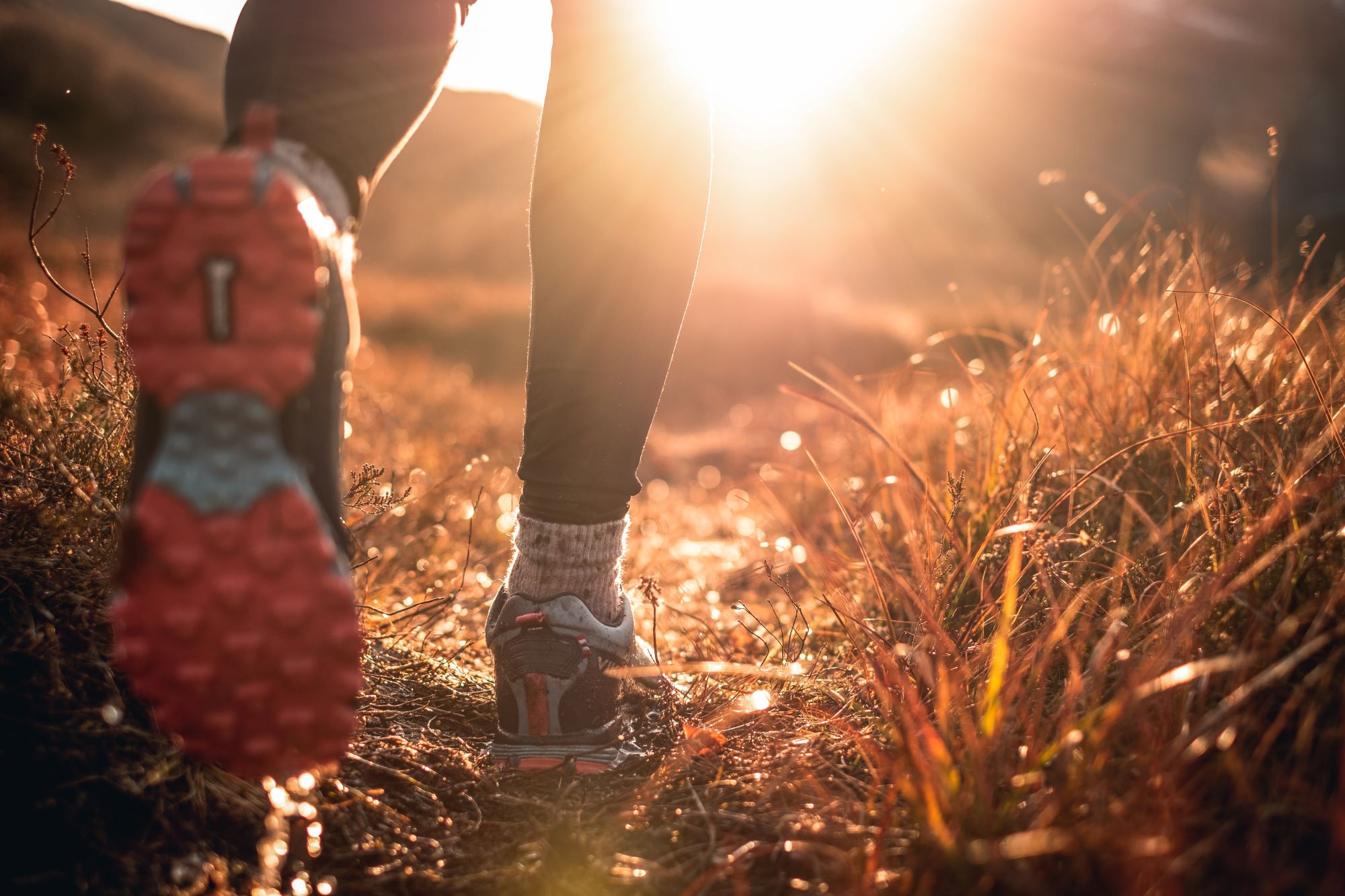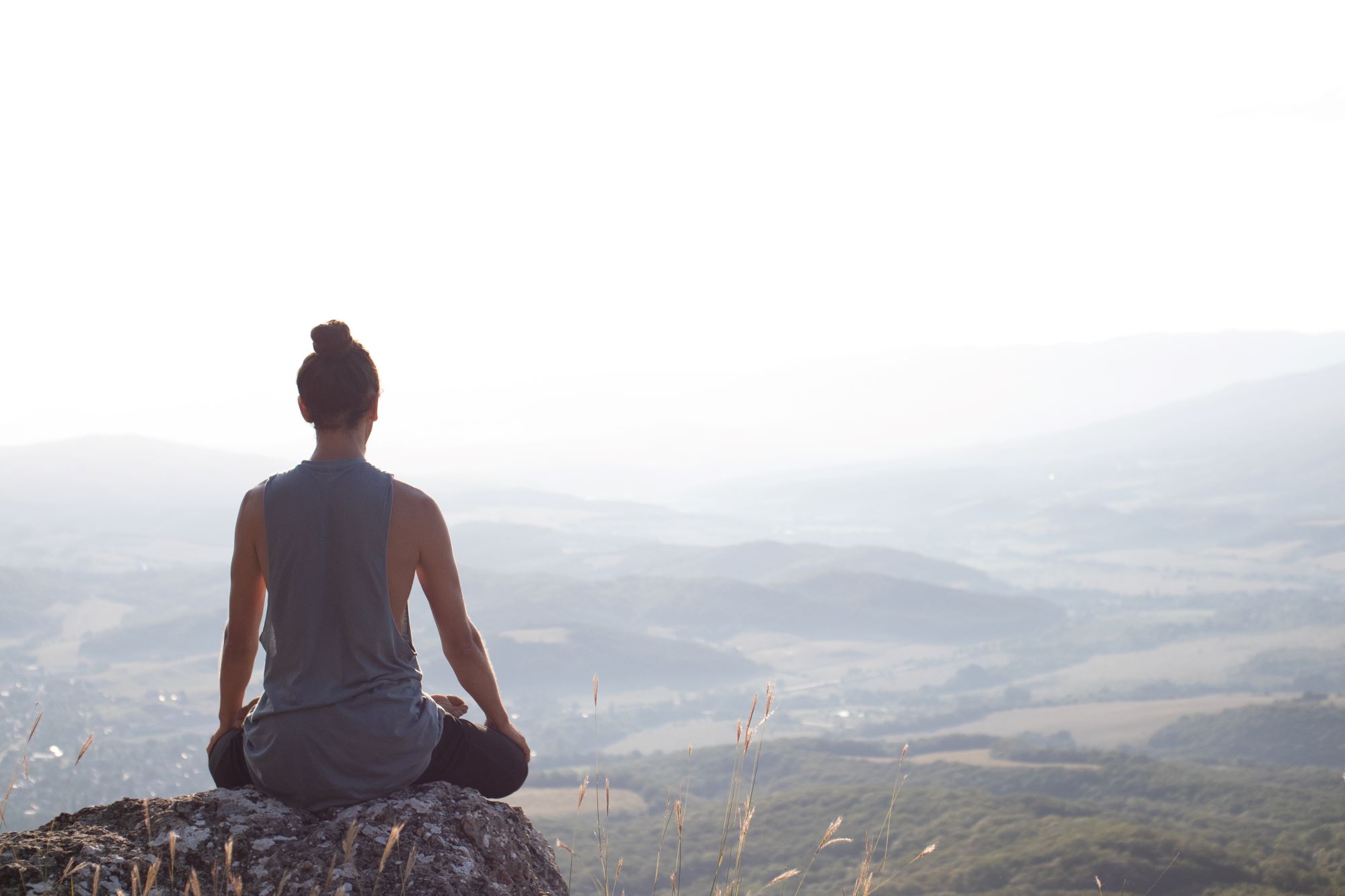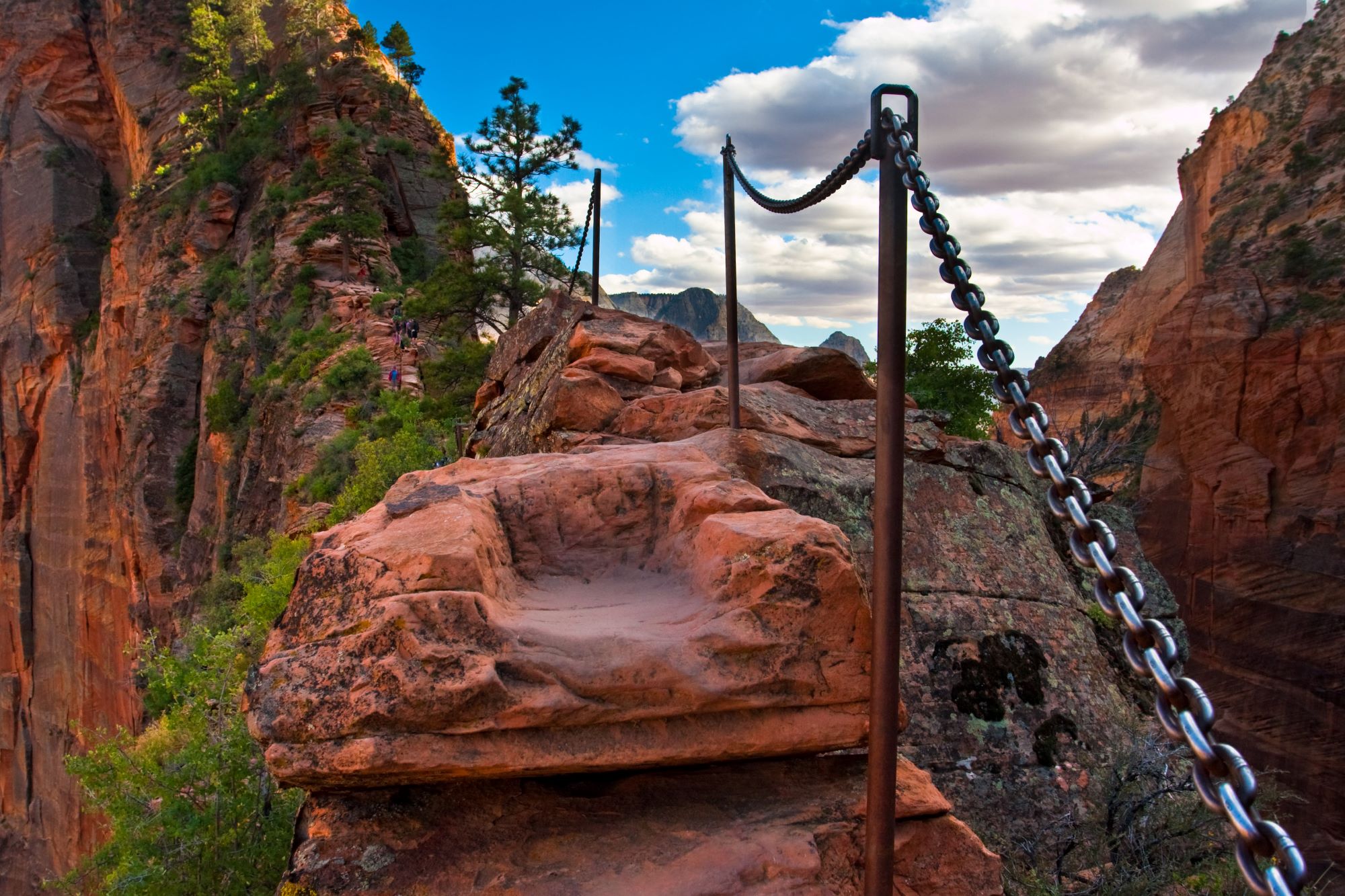
The Health Benefits of Hiking in Utah's Diverse Landscapes
In a world where fitness often confines itself within the walls of gyms, hiking emerges as a breath of fresh air, offering a more organic and holistic approach to physical well-being. This versatile activity extends beyond the simplicity of walking, inviting adventurers to engage with the natural world in all its diversity. From the soothing ambience of rolling hills to the rigorous demands of rugged mountain trails, hiking presents a varied canvas that challenges and strengthens the body in a multitude of ways. Unlike the predictability of gym equipment or the monotony of pavement pounding, the unpredictable nature of hiking trails stimulates a wide range of muscle groups. The uneven terrains demand more than just leg strength; they require the engagement of core muscles for stability and balance, making hiking a comprehensive full-body workout. When the trail gets tough, and the incline steepens, even the arms and shoulders join the effort, especially when trekkers arm themselves with trekking poles. This full spectrum of physical engagement ensures a level of conditioning and strength building that is hard to replicate in other forms of exercise.
The journey of hiking is as varied in its intensity as it is in its terrain, offering something for everyone. For those new to the trails, well-maintained paths provide an accessible introduction, gently building endurance and cardiovascular health. Yet, for the seasoned hiker, the challenge escalates on more rugged and technically demanding trails, which push the limits of muscular strength, endurance, and cardiovascular capacity. This gradation from simple to challenging trails mirrors the natural progression of physical fitness, allowing hikers to scale their efforts in sync with their evolving capabilities. This scalability ensures that hiking remains a relevant and effective exercise for a broad spectrum of enthusiasts, from casual walkers to the most ardent trailblazers.
Beyond the physical, hiking is a balm for the mind and spirit, offering benefits that transcend bodily health. The ever-changing landscapes and immersive natural environments provide a sensory and mental stimulation rarely found in the structured environment of a gym. This communion with nature lifts the exercise experience from mere physical exertion to a more enjoyable and mentally rewarding activity. Studies have shown that time spent in nature reduces stress, enhances mood, and bolsters overall mental well-being. The act of hiking, combining physical effort with the aesthetic pleasure of natural beauty, fosters mindfulness and a deeper connection with the environment. This holistic engagement of body, mind, and spirit is what distinguishes hiking as not just an exercise but a comprehensive wellness activity.

Comprehensive Physical Exercise
Hiking, as a multifaceted form of exercise, stands out for its ability to offer a more holistic and dynamic workout than traditional gym routines or regular jogging. This unique form of physical activity is inherently variable, adapting to the natural contours and challenges presented by different landscapes. As hikers traverse various terrains, from gentle, rolling hills to steep, rocky ascents, their bodies engage a diverse array of muscle groups. This is not limited to the legs and lower body, as uneven terrain and natural obstacles require the engagement of core muscles for stability and balance. Moreover, the use of trekking poles in more challenging hikes involves the arms and shoulders, turning hiking into a full-body workout. This variety in physical exertion ensures a comprehensive strengthening and conditioning of the body, enhancing overall fitness in a way that is difficult to achieve through more monotonous forms of exercise.
In addition to the physical diversity it offers, hiking also presents a range of intensities and difficulties, allowing for a customizable workout tailored to individual fitness levels and goals. For beginners, a smooth, well-maintained trail provides a gentle introduction to outdoor exercise, focusing on basic endurance and cardiovascular health. For the more experienced, rugged, and technically challenging trails offer an intense workout, significantly improving muscular strength, endurance, and cardiovascular capacity. The natural progression of hiking, from easy to difficult trails, allows for gradual improvement in fitness levels, making it an ideal activity for long-term health and fitness goals. This scalability of hiking ensures that it remains a relevant and effective form of exercise for everyone, from novices to seasoned outdoor enthusiasts.
Furthermore, hiking transcends the physical aspects of exercise by offering mental and emotional benefits. The ever-changing scenery and the immersion in natural environments provide a mental stimulus that is often lacking in the controlled, predictable surroundings of a gym. This engagement with nature not only makes the exercise more enjoyable but also has been shown to reduce stress, enhance mood, and improve overall mental well-being. The act of hiking, with its combination of physical exertion and natural beauty, encourages a mindfulness and connection with the environment that is both grounding and uplifting. This holistic approach to physical exercise, where body, mind, and spirit are equally engaged, is what sets hiking apart as a truly comprehensive form of physical activity.

Cardiovascular Health
The cardiovascular benefits of hiking are both significant and multifaceted, contributing immensely to heart health. When individuals engage in regular hiking, their heart rate naturally elevates, similar to what occurs during any cardiovascular exercise. This consistent increase in heart rate during hikes strengthens the heart muscle, enhancing its efficiency and endurance. Over time, this conditioning of the heart muscle can lead to a reduced risk of heart-related diseases, a major concern in modern health. The exertion involved in hiking, especially on trails with varying elevations, challenges the cardiovascular system, forcing it to adapt and strengthen. This natural form of exercise is highly effective in not only improving the heart's pumping efficiency but also in enhancing overall circulatory health. The improved circulation resulting from regular hiking ensures that oxygen and nutrients are more effectively transported throughout the body, benefiting overall health and vitality.
Furthermore, hiking plays a crucial role in managing and reducing the levels of bad cholesterol (LDL) in the body. The physical activity involved in hiking helps to increase the levels of good cholesterol (HDL), which in turn helps to lower LDL levels. This balance is vital in reducing the risk of arteriosclerosis, heart attacks, and strokes. Regular hikers often experience improvements in their cholesterol profiles, contributing to long-term cardiovascular health. In addition to cholesterol management, hiking aids in regulating blood sugar levels, which is beneficial for individuals with or at risk of diabetes, a condition that can severely impact cardiovascular health.
The rhythmic nature of hiking also has a calming effect on the body, particularly in terms of maintaining a healthy blood pressure level. The consistent, moderate intensity of a typical hike, combined with the calming effects of being in nature, can lead to significant reductions in hypertension. High blood pressure is a common ailment in today’s fast-paced world, and hiking offers a natural means to combat this issue. The stress-reducing effects of being outdoors, coupled with the physical activity of hiking, create a perfect scenario for lowering high blood pressure. This aspect of hiking is particularly beneficial for overall cardiovascular health, as maintaining a healthy blood pressure is crucial for preventing a multitude of heart-related conditions. In summary, the combined benefits of improved heart muscle strength, better cholesterol levels, and regulated blood pressure make hiking an excellent activity for maintaining and enhancing cardiovascular health.

Weight Management
weight management is a crucial aspect of overall health, and hiking serves as a highly effective tool in this regard. The activity of hiking involves various levels of physical exertion that can lead to significant calorie burn, an essential factor in weight management and loss. The number of calories burned during a hike depends on several factors, including the individual's body weight, the terrain of the hike, and the duration and intensity of the activity. For instance, hiking up steep inclines or on rough terrain requires more energy than walking on a flat, smooth path. This increased exertion results in a higher calorie burn. Additionally, the natural variability of hiking trails – encompassing uphill climbs, downhill descents, and flat stretches – ensures that the body is continuously adapting and burning calories at an elevated rate. This makes hiking not just a monotonous cardio exercise but a dynamic activity that can engage the body in a comprehensive way.
Moreover, the calorie-burning potential of hiking is further enhanced by various factors inherent to the activity. Carrying a backpack, for example, adds extra weight that the body must work to carry, increasing the number of calories burned. The weight of the backpack can be adjusted according to the individual's fitness level and weight loss goals, making hiking a customizable and scalable exercise. Additionally, navigating through varying terrains such as steep inclines, rocky paths, or even obstacles like fallen trees and boulders requires more energy than walking on a flat surface. This not only adds to the calorie burn but also engages different muscle groups, contributing to overall fitness and muscle toning. Moreover, setting a brisk pace while hiking can turn the activity into a high-intensity workout, especially beneficial for those looking to maximize their calorie burn and weight loss.
Hiking offers a unique combination of enjoyment and exercise, making it an appealing option for those aiming to manage their weight. Unlike gym workouts or running on a treadmill, hiking provides a constantly changing scenery and the opportunity to connect with nature, which can make the exercise feel less like a chore and more like a recreational activity. This aspect of hiking – the ability to combine physical exercise with the pleasure of exploring the outdoors – makes it easier to stick to as a regular activity. Consistency is key in weight management, and the enjoyable nature of hiking encourages individuals to remain active and engaged with their exercise routine. The mental and emotional benefits of being in nature, such as stress reduction and improved mood, further contribute to the appeal of hiking as a means of weight management. In summary, hiking is not just an effective way to burn calories and manage weight, but it also offers a holistic, enjoyable experience that can lead to a healthier, more active lifestyle.

Muscle Strength and Tone
Hiking is an exceptional activity for enhancing muscle strength and tone, offering a natural and varied form of resistance training. The act of climbing and descending hills or mountains during a hike provides a rigorous workout for the lower body, particularly targeting the leg muscles and glutes. These muscles are continuously engaged as they work against gravity during uphill climbs and stabilize the body during downhill descents. This constant engagement not only strengthens these muscles but also helps in toning them, leading to improved muscle definition and endurance. The varying degrees of incline and the resistance provided by different trail surfaces make hiking an effective way to challenge and strengthen the lower body in a way that is difficult to replicate in a gym setting.
In addition to the lower body, hiking also engages the upper body, especially when using trekking poles. The use of poles turns a hike into a full-body workout by involving the arms, shoulders, and chest. The action of planting and pushing off with the poles engages the upper body muscles, providing a workout that complements the lower body exertion. This is particularly beneficial as it ensures a balanced development of muscle groups, preventing overemphasis on just the lower or upper body. The use of trekking poles not only adds intensity to the hike but also aids in balance and stability, reducing the impact on knees and joints. This makes hiking a safe and effective way to build muscle strength and endurance across the entire body.
Furthermore, the comprehensive muscle engagement during hiking enhances overall muscle tone and endurance. Regular hiking leads to improved muscular endurance, allowing individuals to engage in physical activity for longer periods without fatigue. This is especially beneficial for other sports and daily activities, as it contributes to a stronger, more resilient body. The natural setting of hiking trails also adds an element of unpredictability and variety to the workout, ensuring that muscles are continuously challenged in new ways. This variety is crucial for continuous muscle development and avoiding plateaus often experienced in more controlled workout environments. Overall, hiking offers a unique combination of muscle strengthening, toning, and endurance building, making it an excellent choice for those seeking a well-rounded approach to fitness.

Bone Density and Health
Hiking's positive impact on bone health is a significant aspect often overlooked in discussions about its benefits. As a weight-bearing exercise, hiking involves walking and sometimes even scrambling over varied terrains, which is highly beneficial for bone density. This type of physical activity requires the bones to bear the weight of the body, plus any additional load such as a backpack. This weight-bearing action stimulates bone-forming cells and helps in the maintenance and building of bone tissue. It's especially important in combating age-related bone density loss, making hiking an essential activity for long-term bone health. The uneven surfaces encountered during hikes, such as rocky paths, steep inclines, and natural obstacles, provide a range of stresses on the bones, which can help to strengthen them and improve their density over time. This is particularly beneficial in preventing conditions like osteoporosis, a disease characterized by decreased bone density and increased fracture risk.
Moreover, hiking not only helps in maintaining current bone health but can also contribute to improving it. Regular engagement in hiking can lead to a progressive increase in bone density, especially in the hips and lower spine – areas commonly affected by osteoporosis. This gradual improvement in bone density is crucial for reducing the risk of bone fractures and other related conditions as one ages. Additionally, hiking’s benefit to joint health should not be overlooked. The activity promotes joint health and flexibility, which is beneficial in preventing and managing arthritis. Arthritis, a condition involving joint pain and stiffness, can be mitigated through regular, moderate exercise like hiking. The natural motion of hiking helps keep joints mobile and lubricated, reducing the risk of joint stiffness and pain.
Hiking is not just about the immediate benefits; it’s an investment in long-term skeletal health. Regular hikes, especially as part of a consistent exercise routine, lay a foundation for a healthier skeletal structure in later years. This aspect of hiking is particularly relevant for individuals at risk of or already experiencing early signs of bone density loss or joint issues. By incorporating hiking into a regular exercise regimen, individuals can actively contribute to their skeletal health, ensuring stronger bones and joints as they age. The accessibility and enjoyment of hiking also make it a sustainable and enjoyable way to enhance bone and joint health, encouraging a lifestyle that supports long-term skeletal well-being.

Improved Balance and Coordination
Hiking on uneven terrain offers a natural and effective way to improve balance and coordination. When navigating through trails that are rarely flat or uniform, hikers are constantly adjusting their footing to accommodate the changing conditions underfoot. This could involve stepping over rocks, maneuvering around roots, or adjusting to sudden inclines and declines. Such constant adjustments demand and develop a keen sense of balance and body awareness. This is where the core muscles come into play. The core muscles, which include the abdominals, lower back, and pelvis, are crucial for maintaining balance. Hiking strengthens these muscles, as they are continuously engaged to stabilize the body on the uneven terrain. The varied demands of different trails mean that the core muscles are consistently being challenged and strengthened, leading to improved balance and coordination.
This enhancement in balance and coordination extends beyond the activity of hiking itself. The skills and muscle strength developed on the trails have practical implications in everyday life. Good balance and coordination are fundamental to performing many day-to-day activities safely and effectively, from walking on uneven streets to navigating stairs. For older adults, in particular, the benefits of improved balance and coordination are even more significant. As one ages, the risk of falls and related injuries increases, often due to decreased balance and muscle strength. Regular hiking can help mitigate this risk by continuously challenging and improving these abilities. The activity keeps the body agile and responsive, which is key in preventing falls and the injuries associated with them.
Moreover, the benefits of improved balance and coordination from hiking contribute to better performance in other sports and physical activities. Athletes or individuals engaged in sports like soccer, basketball, or dance can find hiking a beneficial cross-training activity. The enhanced balance and coordination gained from hiking can lead to improved agility and reaction times, which are crucial elements in many sports. Additionally, the mental focus and concentration required to successfully navigate through challenging hiking trails can improve mental agility and cognitive function. This ability to quickly assess and react to changing environments is a skill that, once honed, can be beneficial in various aspects of life, from sports to everyday decision-making. In essence, hiking not only offers a way to enjoy the great outdoors but also equips individuals with vital skills that enhance their overall quality of life.

Stress Reduction and Mental Clarity
The mental health benefits of hiking are profound and multifaceted, offering a much-needed respite from the stresses of everyday life. Hiking immerses individuals in serene and natural environments that are starkly different from the busy, often chaotic urban settings where many people spend most of their time. This change of environment provides a mental escape, a break from the constant barrage of stimuli and demands that characterize modern life. The tranquility of nature, the sound of birds, the rustle of leaves, and the sight of open skies and natural landscapes work collectively to calm the mind. Moreover, the physical activity involved in hiking further enhances this stress reduction. Exercise is known to release endorphins, chemicals in the brain that act as natural stress relievers. The combination of being in nature and engaging in physical activity creates a potent mix that can significantly lower stress levels, leaving hikers feeling more relaxed and at peace.
In addition to reducing stress, hiking also contributes to increased mental clarity. The act of walking, particularly in a natural setting, allows the mind to wander and decompress. This mental downtime is essential for cognitive processing and creativity. In our daily routines, we are often inundated with information and decisions, which can lead to mental fatigue and decision paralysis. Hiking offers an opportunity to step back from these demands, providing the mental space necessary for reflection and rejuvenation. The physical engagement and focus required to navigate trails can also help to center the mind, drawing attention away from stress-inducing thoughts and worries. This shift in focus not only clears the mind but also helps in gaining a new perspective on problems or challenges one might be facing.
Furthermore, the peace and solitude found in natural settings while hiking are powerful tools for rejuvenating the mind. In a world where constant connectivity and social interaction are the norms, finding time for solitude can be challenging. Hiking offers a chance to be alone with one's thoughts, or to share quiet companionship with others, away from the distractions of everyday life. This time for solitude is crucial for self-reflection and introspection, allowing individuals to reconnect with themselves and their thoughts. The quiet and simplicity of nature provide the perfect backdrop for this kind of personal exploration and mental relaxation. The benefits of this mental reset are far-reaching, improving mood, enhancing creativity, and providing a sense of mental refreshment that can invigorate all areas of life.

Boost in Mood and Mental Health
Regular exposure to nature and physical activity, both integral aspects of hiking, have a significant positive impact on mood and mental health. The experience of being outdoors, particularly in natural, green spaces, has been scientifically shown to improve mood. Natural light plays a vital role in this process. Exposure to sunlight during hiking helps in regulating the body's circadian rhythms, which are essential for a healthy sleep cycle and mood regulation. The fresh air encountered while hiking, often far from the pollution of urban environments, also contributes to this upliftment in mood. Breathing in clean, fresh air has a refreshing effect on the brain, increasing alertness and energy levels. Furthermore, the tranquility and beauty of natural settings have a calming effect on the mind, helping to alleviate symptoms of depression and anxiety. The sights and sounds of nature – be it a flowing stream, rustling leaves, or a panoramic view of a landscape – can shift focus away from negative thoughts and provide a sense of peace and well-being.
The physical exertion involved in hiking also plays a crucial role in enhancing mental health. When engaging in physical activities like hiking, the body releases endorphins, often referred to as 'feel-good' hormones. These endorphins act as natural mood lifters, helping to reduce the perception of pain and triggering a positive feeling in the body, similar to that of morphine. This endorphin release can lead to what is commonly known as the 'runner’s high', a state of euphoria coupled with reduced anxiety and a lessened ability to feel pain. This biochemical response to physical exertion is a natural and effective way to boost mood and combat the symptoms of stress, depression, and anxiety. Moreover, the sense of accomplishment that comes from completing a hike, whether it's reaching the summit of a mountain or completing a long trail, can boost self-esteem and contribute to a sense of fulfillment and happiness.
In addition to the direct mood-lifting effects of sunlight, fresh air, and endorphins, hiking also offers indirect benefits to mental health through social interaction and a sense of connection. Hiking with friends or in groups provides an opportunity for social engagement, which is an important factor in maintaining good mental health. Social interactions, even simple conversations or shared experiences during a hike, can provide emotional support and a sense of belonging. For those hiking alone, the activity can still offer a sense of connection – not necessarily with other people, but with nature itself. This connection to the natural world can foster a sense of belonging and peace, as well as a broader perspective on life and personal challenges. Through these various mechanisms – be it direct interaction with nature, physical exercise, or social connectivity – hiking stands out as a powerful activity for boosting mood and enhancing overall mental health.

Cognitive Benefits
Hiking, often perceived primarily as a physical endeavor, also encompasses significant cognitive benefits that enhance mental functions. The stimulation received from immersing oneself in diverse natural environments is particularly beneficial for enhancing creativity and problem-solving skills. Natural settings provide a rich tapestry of stimuli that differ greatly from the often monotonous urban or indoor environments. This diversity in sensory input can spark creative thinking and inspire new ideas. The ever-changing landscapes and challenges encountered on a hike require hikers to continually adapt and solve problems, such as finding the best path over difficult terrain or deciding how to adjust their pace. These kinds of mental exercises, prompted by the dynamic nature of hiking, stimulate the brain and can lead to improved problem-solving skills and innovative thinking.
Additionally, the need to navigate trails and make quick decisions during hiking can positively impact other cognitive functions like memory and attention. The act of following a trail requires a hiker to pay attention to their surroundings, remember landmarks, and stay oriented. This type of active navigation engages and enhances spatial memory and orientation skills. Furthermore, hiking often involves planning and remembering routes, which exercises short-term and long-term memory. The focus required to safely navigate a trail – watching for obstacles, maintaining the correct path, and adjusting to changing conditions – also hones attention skills. This heightened state of awareness and focus can transfer to other areas of life, improving overall cognitive function and the ability to concentrate in various situations.
Moreover, hiking provides an opportunity for a mental reset, which can lead to improved cognitive functioning. In today’s fast-paced world, constant exposure to screens and information overload can lead to mental fatigue, reducing cognitive capacities like concentration, memory, and processing speed. The peaceful and unplugged environment offered by hiking allows the mind to rest and recover from this cognitive overload. This mental break can rejuvenate cognitive abilities, leading to clearer thinking and improved concentration upon returning to daily tasks. The combination of physical exercise, engagement with nature, and the mental challenge of navigation and problem-solving makes hiking a comprehensive activity for boosting brain health and cognitive functions.

Healthy Relationships
Hiking with others, whether friends, family, or even acquaintances, offers a unique and enriching experience that goes beyond physical exercise. It creates an environment ripe for building and deepening relationships. As individuals step away from their daily routines and immerse themselves in nature, they find a sense of peace and openness that facilitates deeper communication. Sharing the journey of traversing varied terrains and overcoming physical challenges together strengthens bonds. This collective experience of navigating paths, from steep climbs to tranquil forest walks, naturally fosters trust, empathy, and mutual support. These shared adventures become a foundation for lasting friendships, where each step on the trail mirrors the journey of understanding and connecting with one another.
The mental and emotional benefits of hiking in groups are profound. Nature's tranquil setting reduces stress and anxiety, providing a backdrop for individuals to share thoughts and experiences openly. This act of sharing within a supportive group is therapeutic, offering a sense of belonging and community that is essential for mental well-being. The group dynamics during a hike encourage teamwork and collaboration, allowing each individual to feel valued and heard. Such experiences not only enhance the enjoyment of the hike but also contribute to building self-esteem and social skills. The bonds formed during these shared experiences extend beyond the trails, laying the groundwork for supportive, healthy relationships that are crucial for emotional resilience and happiness.
Moreover, hiking together teaches important life lessons and skills that are invaluable in personal growth and relationship building. It encourages adaptability, problem-solving, and resilience, skills that are nurtured through shared challenges and adventures. These moments of collective triumph and mutual support on the trail translate into stronger, more empathetic relationships in everyday life. The memories and stories created during these hikes become cherished shared experiences, further cementing the bonds of friendship. In essence, group hiking is not just a journey through nature, but a journey towards nurturing healthier, more fulfilling relationships that contribute significantly to overall well-being and happiness.
More Information...
Diverse Landscape Challenges in Utah
Utah's diverse landscape presents a unique and varied playground for hikers, offering an array of challenges that cater to a wide range of fitness levels and preferences. The state's geography is remarkably varied, featuring rugged mountains, sprawling deserts, and everything in between. Each type of terrain poses its own set of physical demands, creating different hiking experiences. In the mountainous regions, hikers encounter steep inclines and rocky paths, which provide a rigorous workout that targets the cardiovascular system as well as the leg and core muscles. The effort required to ascend these elevations is significant, offering a high-intensity workout that can improve heart health and muscular endurance. Additionally, the higher altitudes encountered in these regions pose an extra challenge, as the thinner air requires the body to work harder to oxygenate, thereby enhancing lung capacity and overall stamina.
Conversely, the desert regions of Utah offer a different set of challenges, where the focus shifts more towards endurance and heat tolerance. Hiking in desert environments typically involves navigating through vast, open landscapes with minimal shade, which tests the body's ability to regulate temperature and stay hydrated. These hikes tend to be less about steep climbs and more about enduring the elements, requiring hikers to be mindful of sun exposure and water intake. The terrain in these areas can vary from sandy and loose underfoot to rocky and uneven, challenging balance and stability. This diversity not only conditions the body to withstand different types of physical stress but also prepares the mind to adapt to varying environmental conditions.
These varying landscapes in Utah ensure that hikers can continuously challenge themselves in new ways, preventing the plateau effect often encountered in more monotonous workout routines. For instance, alternating between high-altitude mountain hikes and long-distance desert treks can provide a well-rounded fitness regimen that continuously tests and improves different aspects of physical health. Moreover, the scenic beauty and the sense of accomplishment that come with conquering these diverse terrains add to the overall enjoyment and motivation for hiking. Whether it's reaching the summit of a mountain and enjoying panoramic views or crossing a vast desert landscape to find a hidden oasis, the rewards of hiking in Utah's diverse landscapes are as much mental and emotional as they are physical. This variety not only enhances the hiking experience but also ensures a comprehensive approach to fitness and well-being.

High Elevation Benefits in Utah
Utah's landscape, characterized by its high elevation regions, offers distinctive health benefits for hikers. Many of the state's trails ascend to significant altitudes where the air is thinner and contains less oxygen. When hiking at these elevated heights, the body is compelled to adapt to the decreased oxygen availability. This adaptation involves physiological changes, primarily in the respiratory and circulatory systems. The body becomes more efficient at utilizing oxygen, which, in turn, enhances lung capacity and strengthens the respiratory muscles. This increased efficiency in oxygen usage not only benefits lung health but also contributes to overall cardiovascular fitness. The heart and lungs work together more effectively, which can lead to improvements in stamina and endurance. For hikers who frequently trek at high altitudes, these adaptations can result in a notable increase in endurance, not just on the trails, but in other physical activities as well.
The benefits of high-altitude hiking extend beyond respiratory and cardiovascular improvements. The challenge of dealing with lower oxygen levels at higher elevations also enhances the body's metabolic efficiency. The body learns to conserve energy better and use oxygen more efficiently, which can have long-term health benefits. This adaptation can aid in better overall physical performance and is particularly beneficial for athletes or individuals engaged in endurance sports. Furthermore, the effort required to hike at these altitudes can contribute to increased calorie burn, aiding in weight management and fitness. The natural stress placed on the body in these conditions acts as a stimulus for physical improvement, strengthening the body’s ability to cope with physical exertion.
Aside from the physical benefits, hiking at high elevations in Utah also offers unique psychological benefits. The experience of reaching the summit of a high mountain and witnessing the expansive views can be incredibly rewarding and mentally uplifting. The sense of achievement in overcoming the additional challenges posed by high altitudes can boost confidence and provide a sense of accomplishment. Additionally, the serene and often untouched natural environment found at these elevations provides a sense of tranquility and peace, contributing to mental well-being. This combination of physical challenge and mental rejuvenation makes high-elevation hiking in Utah an enriching experience for both the body and mind, promoting overall health and wellness.

Connection with Utah's Natural Beauty
Utah's breathtaking natural beauty, encompassing a variety of national parks and wilderness areas, provides an invaluable resource for mental and emotional well-being. The state's landscapes, ranging from the majestic rock formations of Zion National Park to the unique hoodoos of Bryce Canyon and the iconic arches of Arches National Park, offer more than just visual splendor. Immersing oneself in these awe-inspiring natural environments can have a profound impact on mental health. The experience of being surrounded by such grandeur can elicit a sense of awe and wonder, which has been shown to have several psychological benefits. This sense of awe can lead to a feeling of being part of something larger than oneself, providing perspective on life's challenges and reducing the feelings of stress and anxiety. The sheer beauty and majesty of these landscapes can shift one's focus away from daily worries and stressors, fostering a sense of peace and tranquility.
The emotional benefits of connecting with Utah's natural beauty extend to various aspects of mental health. Spending time in these serene environments can lead to an improvement in mood and a decrease in symptoms associated with depression and anxiety. The natural settings offer a tranquil space for reflection and introspection, which can be therapeutic for individuals dealing with emotional and psychological challenges. The act of hiking and exploring these areas not only provides physical exercise, which is beneficial for mental health, but also offers a form of environmental therapy. The quiet and solitude found in these parks and wilderness areas allow for a mental escape, providing a break from the hustle and bustle of everyday life. This connection with nature can rejuvenate the mind, restoring mental energy and improving overall cognitive function.
Furthermore, Utah's natural landscapes provide an opportunity for social bonding and community building, which are essential for emotional health. Hiking and exploring these parks with friends, family, or hiking groups can strengthen relationships and foster a sense of community. Shared experiences in these beautiful settings can create lasting memories and deepen bonds between individuals. For those hiking alone, the experience can still offer a sense of connection, not necessarily with other people, but with the environment itself. This connection to nature and the sense of belonging it can foster are critical components of emotional well-being. The variety and uniqueness of Utah's natural landscapes, from its alpine forests to its desert expanses, ensure that every visit can offer a new and enriching experience, contributing to ongoing mental and emotional health.

Seasonal Hiking Opportunities in Utah
Utah's distinct seasons offer a diverse array of hiking experiences, making it an ideal destination for year-round outdoor activity. Each season brings its unique charm and set of conditions, presenting hikers with ever-changing landscapes and challenges. During the winter months, Utah transforms into a snowy wonderland, offering a completely different hiking experience. Trails that were once easily navigable become blanketed in snow, opening up opportunities for snowshoeing and winter trekking. These winter hikes offer not just the beauty of snow-covered landscapes but also the chance to experience the tranquility and stillness that comes with it. Hiking through the snow is not only a visually stunning experience but also a more physically demanding one, providing a great workout and an opportunity to develop resilience against colder conditions.
As the snow melts and spring arrives, the landscape in Utah undergoes a dramatic transformation. Wildflowers begin to bloom, filling the trails with vibrant colors and fragrances. Spring hiking in Utah is a time to witness the rebirth and rejuvenation of nature. The streams and rivers swell with the melting snow, adding the soothing sound of flowing water to the hiking experience. This season is ideal for those who enjoy wildlife viewing, as many animals and birds become more active. The moderate temperatures of spring make for comfortable hiking conditions, encouraging longer treks and exploration of the diverse flora and fauna. Additionally, the changing conditions of the trails in spring, with varying levels of mud and water, present hikers with unique challenges in terms of navigation and terrain adaptability.
Summer and fall in Utah offer their own unique hiking experiences. Summer brings warmer temperatures and longer days, allowing for extended hikes and exploration of higher elevations that may have been inaccessible during the winter and spring. Hiking in the summer offers the chance to explore Utah's diverse landscapes, from desert areas to mountainous regions, in their full glory. As fall approaches, the scenery changes again, with the foliage transforming into a palette of reds, oranges, and yellows. Fall hiking is particularly spectacular in Utah, with cooler temperatures and the stunning fall colors creating an unforgettable backdrop for outdoor adventures. The crisp air and less crowded trails make fall an ideal time for those seeking a more solitary and reflective hiking experience. In summary, Utah's varied seasons provide a year-round playground for hikers, each season offering its own unique beauty and set of challenges, ensuring that the hiking experience is always fresh and engaging.